Buy this modern artwork Death and Life - Gustav Klimt by Accessible Art on canvas, ArtFrame, poster and wallpaper, printed on demand in high quality.
About "Death and Life - Gustav Klimt"
by Accessible Art
About the artwork
The Austrian Symbolist painter Gustav Klimt finished his gigantic allegorical masterpiece "Death and Life" in 1915. The artwork contrasts the magnificent, teeming energy of life with the terrible reality of mortality in a strong and colorful meditation on the never-ending cycle of human existence.
There is a dramatic division of the canvas into two parts. Death is depicted on the left as a skeletal grim reaper wearing a black, solemn gown embroidered with crosses. With a club in his hand, he is shown as a patient yet threatening spectator who looks over at the living.
The painting's right side, in sharp contrast, bursts with a colorful, entwined mass of humanity that stands in for Life. From a baby to an elderly woman, figures of all ages are nestled together in a sensuous embrace, their bodies covered with the vivid colors and mosaic-like patterns that are characteristic of Klimt's work. The global connection of love, family, and rebirth is symbolized by this human pyramid, which appears to float in an abstract space while being enveloped in a floral, ornamental form.
The figures seem calm, completely engrossed in the dream of life, and oblivious to the approaching presence of Death. The continuous dance between mortality and vitality is masterfully captured in Klimt's composition, which implies that although death is an unavoidable end, life itself is a rich, lovely, and interwoven celebration.

About Accessible Art
Accessible Art is an online shop that is dedicated to making art accessible to everyone without compromising on quality. We offer affordable and high-quality art pieces that have been digitally restored, upscaled, and improved. You can find our curated selection of art on various platforms, including Artheroes.com... Read more…
 Germany
Germany Ordered in May 2021
Ordered in May 2021
 Netherlands
Netherlands Ordered in August 2024
Ordered in August 2024
 Germany
Germany Ordered in August 2025
Ordered in August 2025
 Netherlands
Netherlands Ordered in August 2019
Ordered in August 2019
 Germany
Germany Ordered in March 2021
Ordered in March 2021
 Germany
Germany Ordered in December 2021
Ordered in December 2021
 Germany
Germany Ordered in September 2021
Ordered in September 2021
 Germany
Germany Ordered in January 2021
Ordered in January 2021
 Netherlands
Netherlands Ordered in May 2023
Ordered in May 2023
 Germany
Germany Ordered in March 2020
Ordered in March 2020
 Germany
Germany Ordered in January 2021
Ordered in January 2021
 Netherlands
Netherlands Ordered in November 2019
Ordered in November 2019
About the material
ArtFrame™
Interchangeable Art Prints
- High-quality print
- Easily interchangeable
- Acoustic function
- Large sizes available
Discover the artworks of Accessible Art
 Wanderer Above the Sea of Fog - Caspar David FriedrichAccessible Art
Wanderer Above the Sea of Fog - Caspar David FriedrichAccessible Art At the Fountain - Frederic LeightonAccessible Art
At the Fountain - Frederic LeightonAccessible Art Chiajna Willows - Stefan LuchianAccessible Art
Chiajna Willows - Stefan LuchianAccessible Art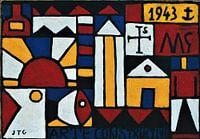 Arte Constructivo - Joaquin Torres GarciaAccessible Art
Arte Constructivo - Joaquin Torres GarciaAccessible Art A Moonlit Night over a Chapel and Riders - Albert RiegerAccessible Art
A Moonlit Night over a Chapel and Riders - Albert RiegerAccessible Art A Mosque - Alberto PasiniAccessible Art
A Mosque - Alberto PasiniAccessible Art Angel in Chains - Odilon RedonAccessible Art
Angel in Chains - Odilon RedonAccessible Art Embarkation of Soldiers near the Montelbaanstoren - Abraham StorckAccessible Art
Embarkation of Soldiers near the Montelbaanstoren - Abraham StorckAccessible Art Crossing in a Moonlit Night - Albert RiegerAccessible Art
Crossing in a Moonlit Night - Albert RiegerAccessible Art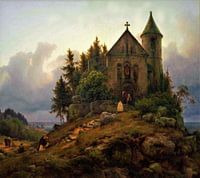 Chapel on the edge of the Wood - Karl FriedrichAccessible Art
Chapel on the edge of the Wood - Karl FriedrichAccessible Art Haunting - Odilon RedonAccessible Art
Haunting - Odilon RedonAccessible Art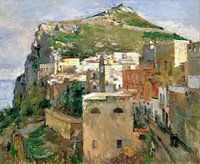 Capri - Theodore RobinsonAccessible Art
Capri - Theodore RobinsonAccessible Art Fatality - Jan TooropAccessible Art
Fatality - Jan TooropAccessible Art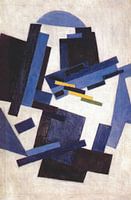 Abstract Composition - Olga RozanovaAccessible Art
Abstract Composition - Olga RozanovaAccessible Art Funeral of Firstborn - Mykola YaroshenkoAccessible Art
Funeral of Firstborn - Mykola YaroshenkoAccessible Art The Dance - Henri MatisseAccessible Art
The Dance - Henri MatisseAccessible Art Wolves in the Forest in Front of a Cave - Caspar David FriedrichAccessible Art
Wolves in the Forest in Front of a Cave - Caspar David FriedrichAccessible Art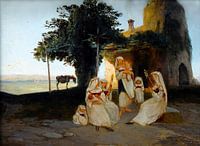 Weaverwomen in Cervara - Carl BlechenAccessible Art
Weaverwomen in Cervara - Carl BlechenAccessible Art Gamle Lines Fødselsdag. - Hans Andersen BrendekildeAccessible Art
Gamle Lines Fødselsdag. - Hans Andersen BrendekildeAccessible Art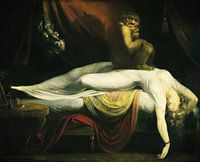 The Nightmare - Henri FuseliAccessible Art
The Nightmare - Henri FuseliAccessible Art
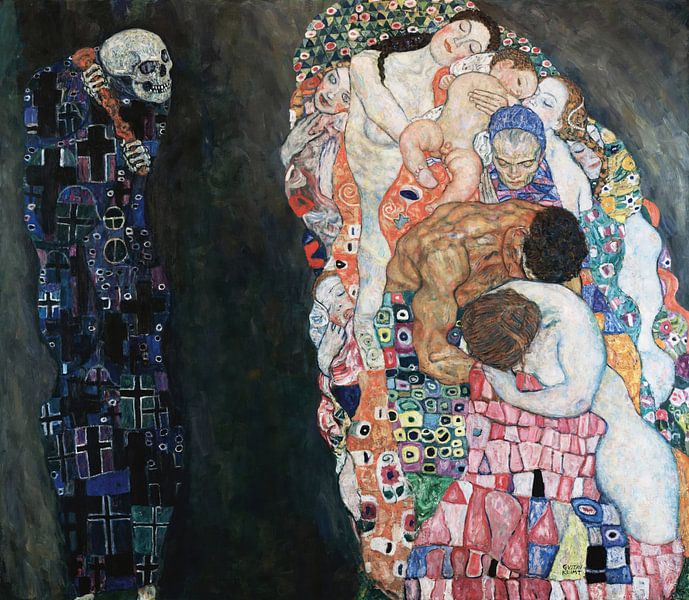








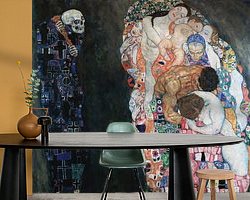



 Art Nouveau
Art Nouveau Gustav Klimt
Gustav Klimt Modern
Modern Old masters
Old masters









